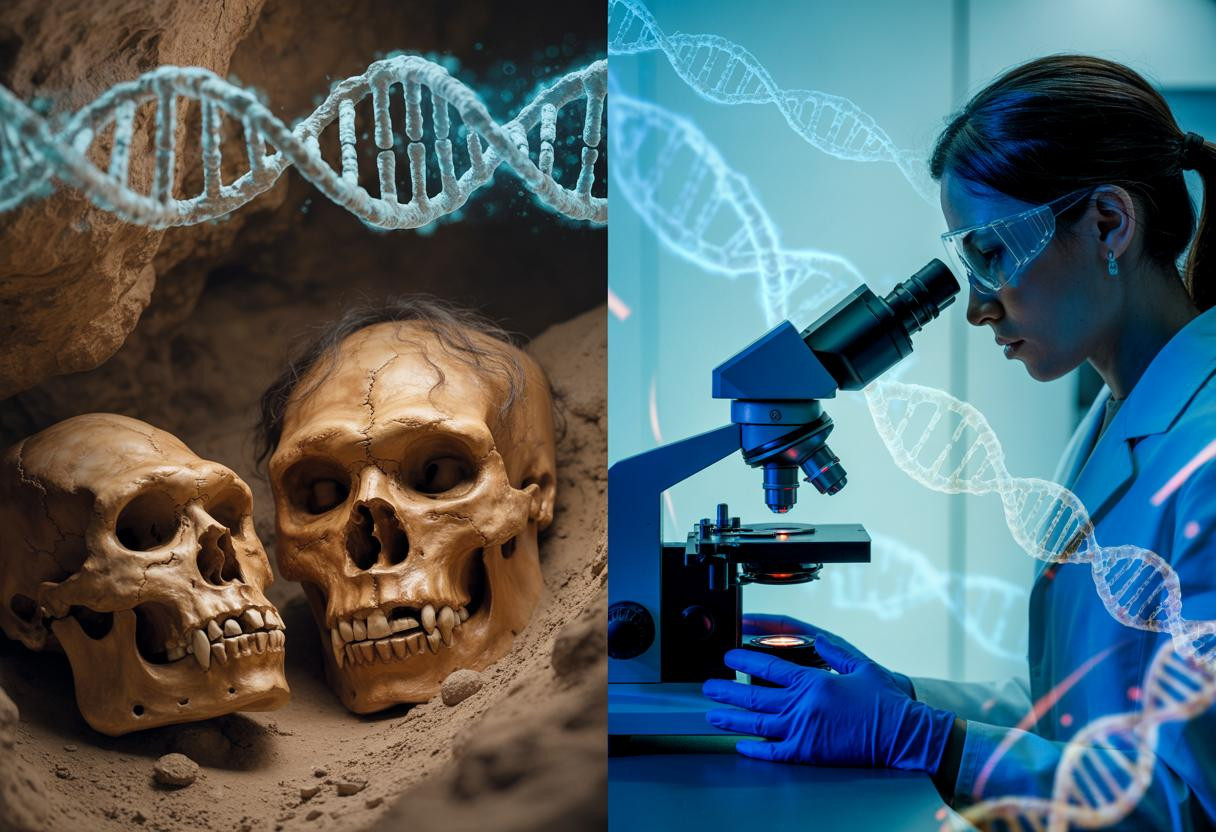In a groundbreaking discovery that pushes back the timeline of human-virus interactions, scientists have identified 50,000-year-old viral DNA preserved in Neanderthal remains. This remarkable finding, announced by researchers from the Federal University of São Paulo, reveals that our ancient relatives battled many of the same viral foes that plague modern humans today—potentially offering new insights into both Neanderthal extinction and our own immune systems.
The oldest human viruses ever discovered
The viral fragments—identified in bones recovered from Siberia’s Chagyrskaya Cave—include remnants of adenovirus, herpesvirus, and papillomavirus. These ancient pathogens predate the previous record holder by nearly 20,000 years, making them the oldest human viruses ever discovered. Like time capsules buried in genetic code, these viral fingerprints offer a unique window into prehistoric health challenges.
“These viruses are essentially molecular fossils,” explains Dr. Marcelo Briones, lead researcher on the project. “The fact that they’ve persisted in recognizable form for over 50 millennia speaks to their remarkable evolutionary stability—like biological immortals watching human evolution unfold.”
Did viruses contribute to Neanderthal extinction?
One of the most intriguing aspects of this discovery is its potential connection to Neanderthal extinction. As ancient DNA analysis becomes more sophisticated, scientists are piecing together a complex puzzle of factors that may have contributed to their disappearance around 40,000 years ago.
“Poor health from these infections could have had a significant negative impact when Neanderthals were already competing with another species—Homo sapiens,” notes Briones. “It’s like fighting a war on two fronts: environmental challenges on one side and biological invasions on the other.”
Same viruses, different millennium
Perhaps most striking is how familiar these ancient pathogens appear. The viruses identified include:
- Adenovirus (causes respiratory infections and cold-like symptoms)
- Herpesvirus (responsible for cold sores and other conditions)
- Papillomavirus (linked to various cancers and warts)
All three continue to affect modern humans, suggesting a viral lineage that has outlasted its original hosts—much like ancient architectural foundations that support entirely new structures built centuries later.
What this means for modern medicine
Understanding the evolutionary history of these persistent pathogens could provide valuable insights for contemporary medical research. Similar to how what happens to your brain at 50 informs preventative health strategies, studying these ancient viral interactions may reveal vulnerabilities in disease lifecycles.
This discovery also highlights fascinating connections between viral exposure and cognitive evolution. Just as 25 PlayStation games defined decades of technological progress, these ancient viruses may have shaped millennia of human genetic adaptation.
The cutting-edge technology behind the discovery
Finding these viral fragments required technological innovations rivaling those used in developing Google’s new Android XR glasses. Researchers employed advanced DNA sequencing and sophisticated computational methods to distinguish viral genetic material from host DNA—a challenge comparable to finding specific conversations in a stadium full of people.
The methodical approach resembled how analysts break down French Open matches—isolating key patterns from background noise to reveal meaningful signals.
What might these ancient viruses tell us next?
As research continues, scientists hope to reconstruct more complete viral genomes from these ancient fragments. The answers hidden in this 50,000-year-old viral DNA might not only explain part of our evolutionary past but also help prepare us for future viral challenges—turning ancient adversaries into modern allies in the ongoing battle against infectious disease.
